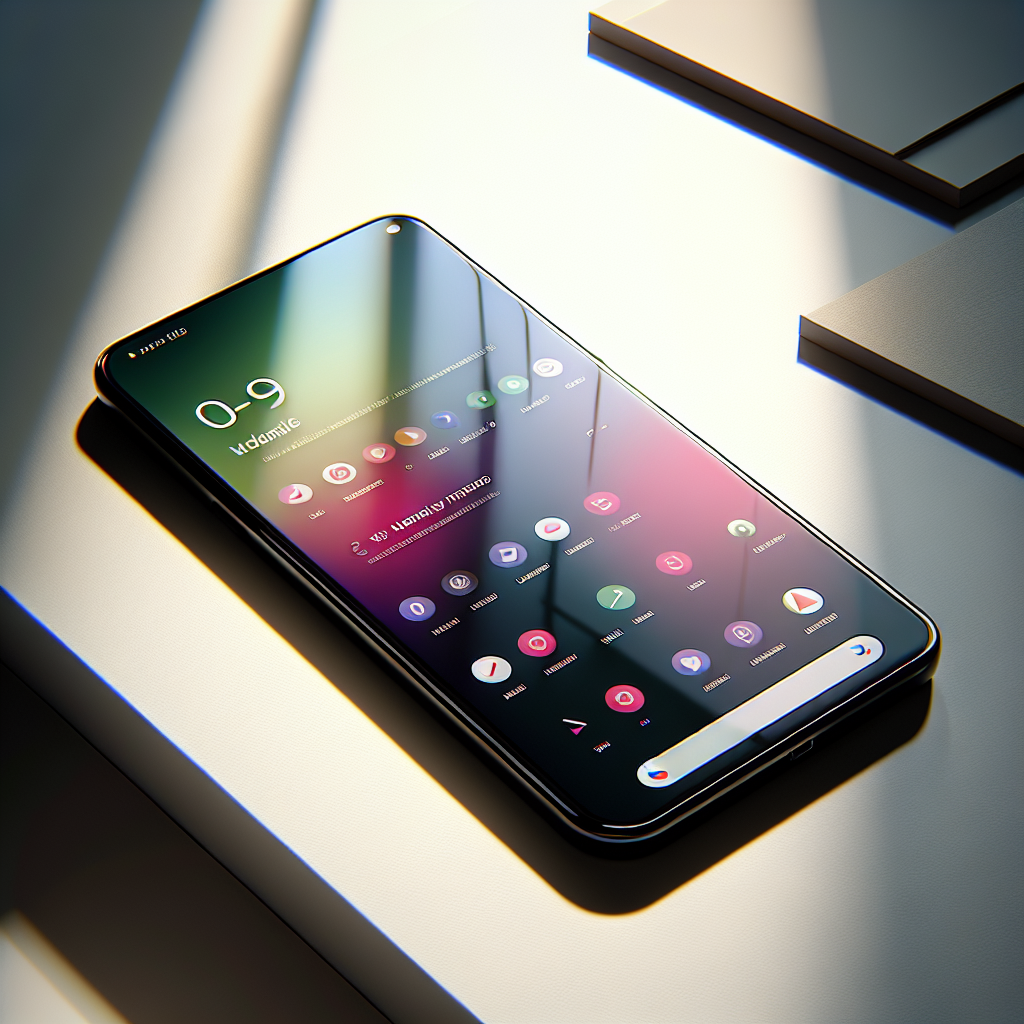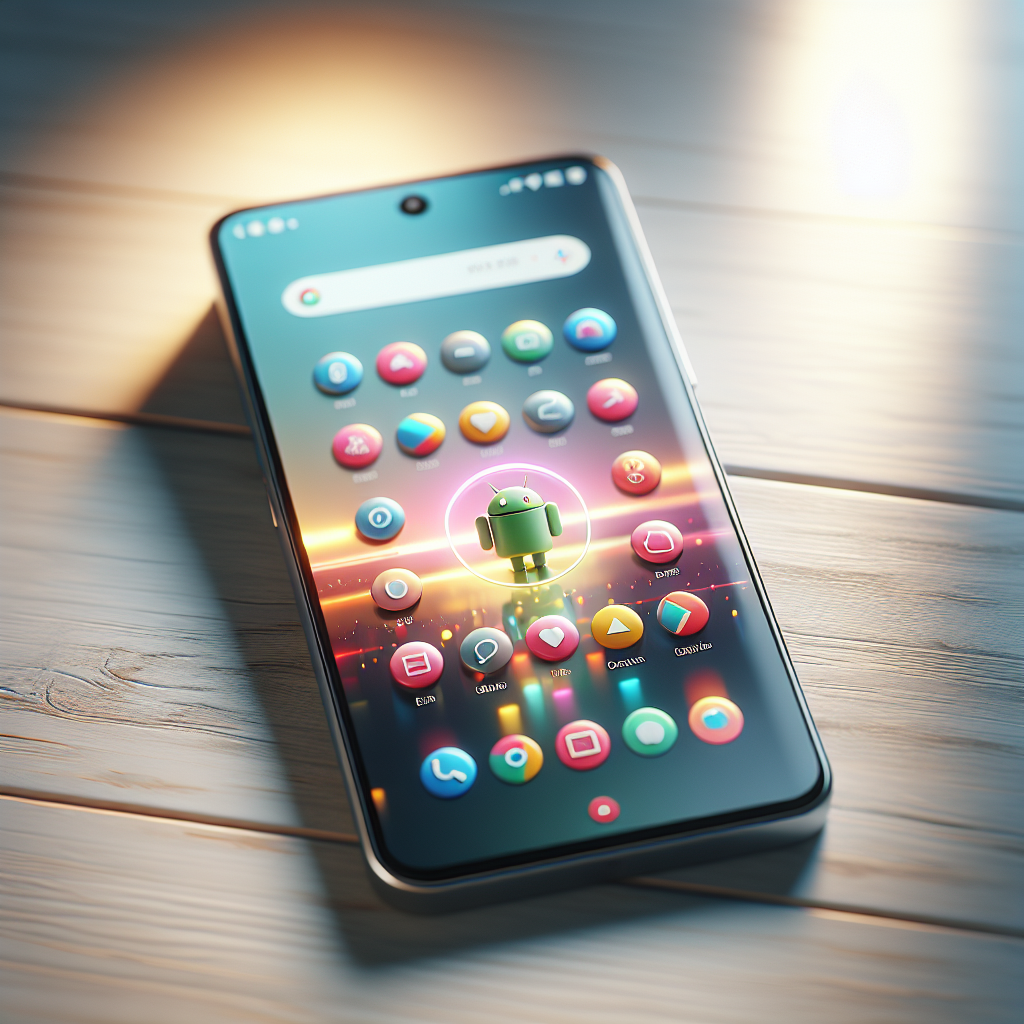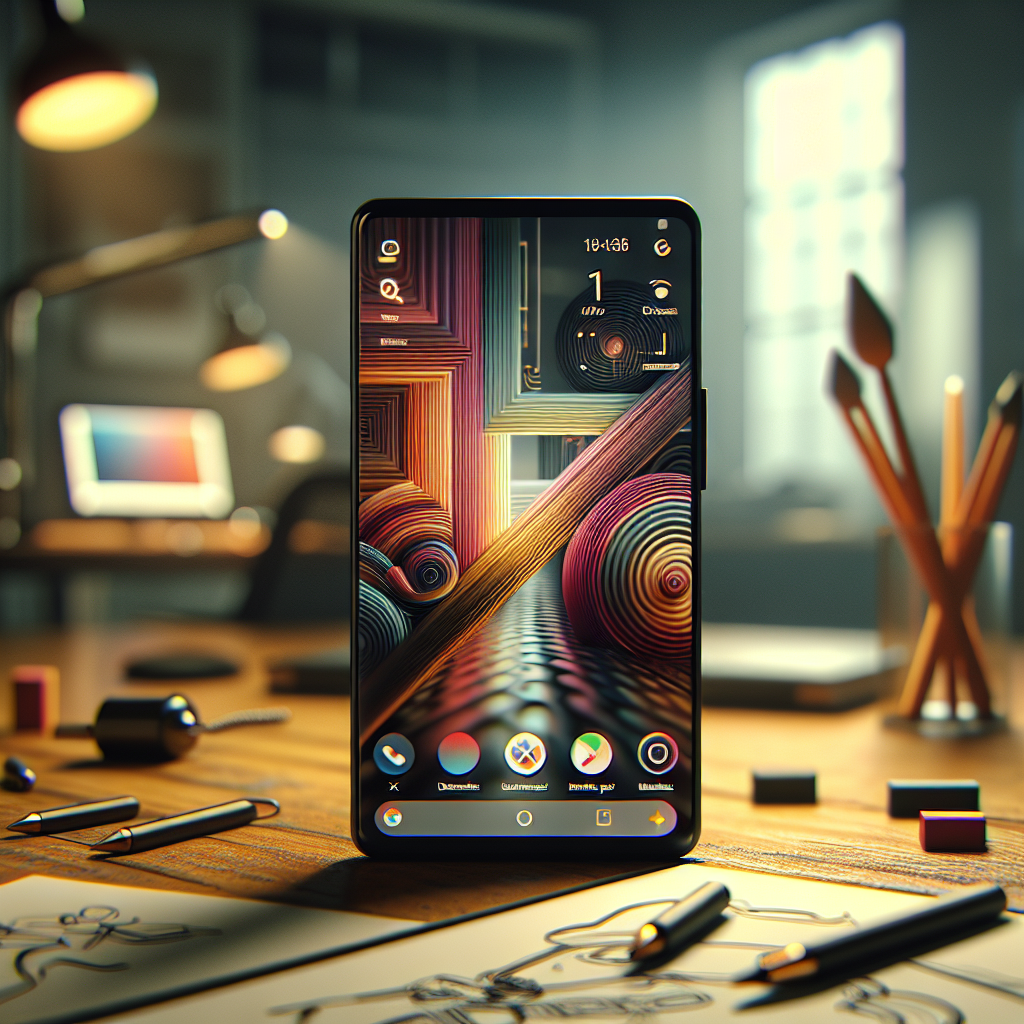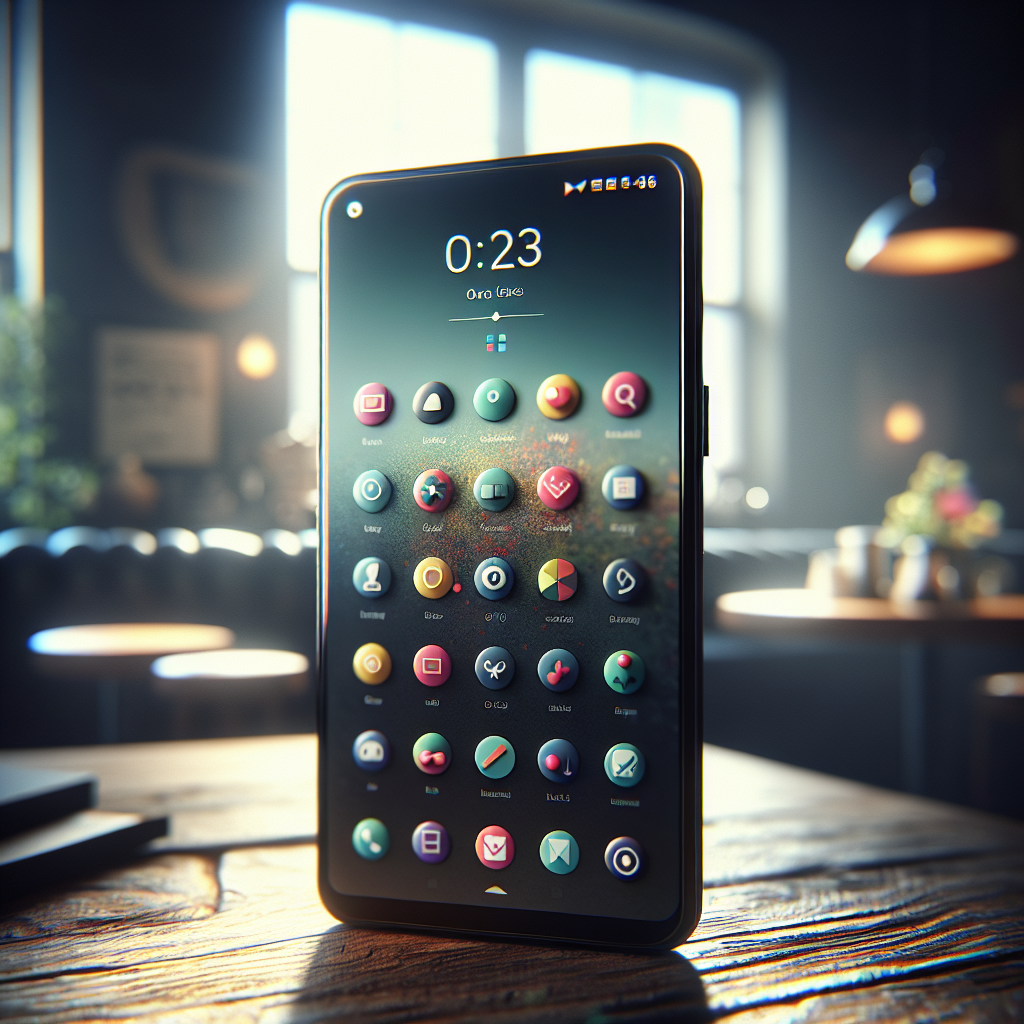How to Design an Android App UI That Stands Out!
In today’s digital landscape, the design android app ui plays a crucial role in determining the success of a mobile application. A well-crafted user interface (UI) is not just about aesthetics; it significantly influences user experience (UX) and overall app performance.
When users interact with an app, their first impression is often based on the UI design. A visually appealing and intuitive interface can enhance user engagement and encourage users to explore the app further. Key aspects that emphasize the importance of Android app UI design include:
- User Retention: An attractive UI fosters a positive experience, making users more likely to return and use the app regularly.
- Brand Identity: Consistent UI design elements help establish brand recognition and trust, which are essential for building a loyal customer base.
- Accessibility: A well-designed UI considers the needs of all users, including those with disabilities, ensuring that everyone can access the app’s features.
- Competitive Advantage: In a saturated market, a standout UI can differentiate your app from competitors, making it more appealing to potential users.
For startups and businesses looking to make their mark, investing in exceptional UI design is a strategic move. By prioritizing user-centric design principles, you can create an app that not only looks great but also functions seamlessly, ultimately leading to higher user satisfaction and retention. Get a free quote today to start your journey towards designing a captivating Android app UI!
Key Principles for Effective Android App User Interfaces

Creating an effective Android app user interface requires an understanding of several key principles that guide the design process. These principles ensure that the app is not only visually appealing but also functional and user-friendly. Here are some essential guidelines to consider:
- Consistency: Maintaining a consistent style throughout the app helps users navigate easily. This includes using the same color schemes, fonts, and button styles across different screens, which reinforces familiarity.
- Simplicity: A cluttered interface can overwhelm users. Keeping the design simple and focused on essential features enables users to accomplish their tasks without distractions.
- Feedback: Providing immediate feedback for user actions enhances the experience. This can be visual cues, such as button animations, or notifications that inform users about the success or failure of their actions.
- Accessibility: Designing for accessibility ensures that all users, including those with disabilities, can interact with the app. This includes considerations like color contrast, text size, and the use of alt text for images.
- Intuitive Navigation: Users should be able to navigate the app effortlessly. Organizing content logically and using familiar navigation patterns can help users find what they need quickly.
By incorporating these key principles into your Android app design, you can create a user interface that not only attracts users but also keeps them engaged and satisfied. Effective UI design is a blend of art and science, aiming to create a seamless experience that meets user needs and expectations.
Creating an Intuitive User Experience for Android Apps

Creating an intuitive user experience for Android apps is essential for retaining users and ensuring they can navigate your application with ease. An intuitive design anticipates user needs and preferences, making interactions seamless and enjoyable. Here are some strategies to achieve this:
- Understand User Behavior: Conduct user research and gather data on how users interact with similar apps. Understanding their habits and preferences will help you tailor your app’s UI to meet their expectations.
- Prioritize Common Actions: Identify the most common actions users will take and ensure they are easy to access. Frequently used features should be prominent and simple to find, reducing the time it takes users to complete tasks.
- Use Familiar Icons and Terms: Employing universally recognized icons and terminology can help users feel comfortable with your app. Avoid jargon and ensure that labels are clear and descriptive to reduce confusion.
- Implement Gestures: Leverage touch gestures like swipes, taps, and pinches to enhance user interaction. Gestures can streamline navigation and provide a more interactive experience when designed thoughtfully.
- Test and Iterate: Regular usability testing is crucial. Gather feedback from real users and be prepared to iterate on your design based on their insights. Continuous improvement helps refine the user experience over time.
By focusing on these aspects, you can create a user experience that feels natural and engaging. An intuitive app interface not only enhances satisfaction but also encourages users to return and explore more of what your app has to offer.
Utilizing Color and Typography in Android App Design

Incorporating color and typography effectively in Android app design is crucial for creating a visually appealing and functional user interface. The right choices can enhance the overall user experience, convey brand identity, and improve readability. Here are some key considerations:
- Choose a Color Palette: Select a cohesive color palette that reflects your brand and resonates with your target audience. Limit your palette to a few key colors to maintain consistency and avoid overwhelming users. Utilize tools like Adobe Color or Coolors to create harmonious combinations.
- Understand Color Psychology: Different colors evoke different emotions and responses. For instance, blue often conveys trust, while red can signify urgency. Leverage color psychology to guide user actions and enhance the emotional connection with your app.
- Ensure Contrast and Accessibility: High contrast between text and background is essential for readability. Make sure that your color choices adhere to accessibility standards, ensuring that users with visual impairments can navigate your app without difficulty.
- Typography Selection: Choose fonts that align with your brand personality and are easy to read on mobile devices. Limit font styles to two or three to maintain a clean look. Hierarchy is important; use different font sizes and weights to distinguish between headings, subheadings, and body text.
- Consistent Styling: Maintain consistency in typography and color usage throughout the app. This consistency helps users recognize patterns and navigate more effortlessly, enhancing their overall experience.
By thoughtfully utilizing color and typography, you can create an Android app design that not only stands out but also fosters a pleasant and engaging user experience.
Implementing Innovative Features in Android UI Design
To create an exceptional Android app UI that captures user attention, it’s essential to implement innovative features that enhance functionality and engagement. Here are several strategies to consider:
- Gesture-Based Navigation: Utilizing swipe gestures or tap functions can improve usability and create a more interactive experience. By allowing users to navigate through intuitive gestures, you can minimize the clutter of traditional buttons and enhance the app’s aesthetic.
- Dynamic Content: Incorporating dynamic elements, such as animations or real-time updates, can keep users engaged and provide a fresh experience. For example, integrating animated transitions when switching between screens can make the app feel more fluid and responsive.
- Augmented Reality (AR) Integration: Leveraging AR technology can offer users an immersive experience that blends digital content with their real-world environment. Apps in retail, gaming, and education can particularly benefit from AR features, making them more interactive and engaging.
- Personalization: Allowing users to customize their experience can significantly enhance user satisfaction. Consider implementing features that enable users to select themes, layouts, or content preferences, making the app feel more tailored to their needs.
- Integration of AI and Machine Learning: AI-driven features, such as chatbots or predictive text, can streamline user interactions and provide personalized recommendations. These intelligent systems can learn from user behavior, enhancing the overall functionality and user experience.
By focusing on these innovative features, you can create an Android app UI that not only stands out but also delivers a rich, user-friendly experience that keeps users coming back.
Testing and Iterating Your Android App UI for Success

Testing and iterating your Android app UI is a crucial step in the development process that ensures your application meets user expectations and functions smoothly. A well-structured testing approach can significantly improve the user experience and overall success of the app. Here are key strategies to effectively test and iterate your UI:
- Usability Testing: Conducting usability tests with real users provides valuable insights into how your app is perceived. Observing users as they interact with the app can reveal pain points and areas for improvement that may not be apparent during the design phase.
- A/B Testing: This method allows you to compare two versions of your app UI to determine which one resonates better with users. By analyzing metrics such as user engagement and conversion rates, you can make data-driven decisions that enhance the app’s performance.
- Feedback Loops: Establish mechanisms for users to provide feedback directly within the app. This can be through surveys, ratings, or in-app messaging. Listening to users’ suggestions and concerns will help you make informed adjustments to the UI.
- Iterative Design: Embrace an iterative approach in which you continually refine your UI based on testing results and user feedback. This process not only helps in fixing issues but also allows for the incorporation of new features that enhance the user experience.
- Performance Testing: Ensure your app performs well on various devices and screen sizes. Conduct tests to measure loading times, responsiveness, and overall performance under different conditions to avoid frustrating users.
By prioritizing testing and iteration in your app development process, you can create a robust Android app UI that meets user needs and drives success. Get a free quote today to start your journey toward an outstanding Android app!





Leave a Reply
Want to join the discussion?Feel free to contribute!